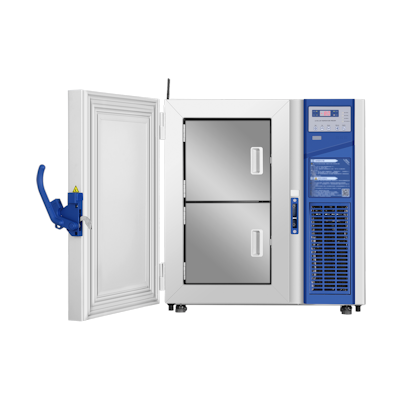Using a Haier Biomedical ultra low temperature (ULT) freezer in your workshop.
Key words: Shrink fit. Dry ice. Liquid nitrogen. Freeze fit.
Engineers use either dry ice or liquid nitrogen to freeze and therefore shrink some components prior to assembly. This is commonly done where an interference fit of for example, shims, bearings, and armatures is required.
Freezing has the advantage of not altering the properties of the frozen item. Once warmed back to room temperature it is once again normal size, elasticity, conductivity, hardness etc. Unlike heating which can alter properties permanently.
This has been done historically with dry ice ( -78 °C) or even liquid nitrogen ( -196 °C).
Dry ice is a solid form of carbon dioxide CO2 As it sublimates (evaporates) the area surrounding it is filling with CO2. With the liquid nitrogen, as it boils and evaporates the nitrogen levels in the area are increasing. So there is a danger with both of these techniques requiring adequate ventilation to prevent anoxia. There is also the frost bite danger with handling the dry ice and much worse with handling the liquid nitrogen.
Safer
to
use a Haier ULT freezer. It is always available. No need
to order the dry ice or liquid nitrogen. No risk of
anoxia. Less risk of frost bite. Once purchased, always
available. For example:

